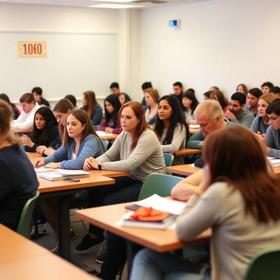Community colleges have been touted as the economic future of this country, as hosts of high school graduates, displaced workers and others look to these institutions of higher education. The Obama Administration has put the focus on community colleges as well, seeing these schools as essential instruments in raising the college graduation across the country over the next decade. However, a new study brings up some familiar concerns regarding these two-year programs; namely, the low completion rates that seem to plague the majority of community colleges nationwide. In fact, the study puts a price tag on the cost of community college dropouts – and it is a steep number indeed.
“The Hidden Costs of Community Colleges”
The recent study, titled, “The Hidden Costs of Community Colleges,” was released by the American Institutes for Research. The study, which was funded by the Bill and Melinda Gates Foundation, looked at full-time, first-year community college students who did not return for their second year of school. Five academic years were analyzed in the study, between 2004 and 2009. The purpose of the study was not only to put a price on the high dropout rate but also to improve outcomes and performance at institutions across the country, according to a press release published at the American Institutes for Research website.
According to a report at the Los Angeles Times, the study showed that about one-fifth of full-time community college students who enroll in school do not make it to their second year. Many of those students are recipients of federal and state grants, as well as other government appropriations that ultimately come out of the taxpayers’ pockets. That translates to a lot of wasted tax dollars as students spend the money, but do not come away with the necessary skills, training, and education to contribute sufficiently to the workforce and economy.
U.S. colleges are experiencing a major dropout issue.
California: The Big Winner – or Loser
The national cost of community college dropouts was a whopping $4 billion, according to a report in the San Francisco Chronicle. California’s expenditures, which topped $480 million, were the largest in the country by far. Of the total, around $64 million went to Pell grants, $25 million to state Cal grants, and $390 million in state appropriations. Nearly all of the money comes from taxpayers’ pockets, but the general population of taxpayers is seeing little in return for their investment.
“These kinds of numbers say to states like California that our taxpayers are on the hook for substantial amounts of money and they are not getting an adequate amount of return,” Mark Schneider, a vice president at American Institutes for Research and author of the report, told LA Times.
Other States Feeling the Pinch
California was followed closely by other large states like Texas and New York. However, other states were also big spenders, with Alabama paying out about $100 million to support students who dropped out. According to a report at al.com, that figure put Alabama in the 11th spot overall in the study. However, some in the state do not believe the report offers a full picture of what goes on at community colleges today.
“We have a large number of students who enroll in a community college with no intention of completing a certificate or a diploma,” Dean Argo, spokesman for the Alabama Community College system, explained to al.com. Argo said that many of the students attending community college today are there to gain specific skills for their trade, and some actually land jobs in that trade before a degree is officially earned.
Philly.com also reports that the state of Pennsylvania spent about $87 million during that five-year time frame, while New Jersey spent even more - $98 million. The funding in both of those states also went to government aid that supported both the schools and individual students. Some were not entirely surprised by the findings in the report.
“We’ve been living with this for years,” Jerry Parker, president of Delaware Community Colleges, told philly.com. “This is not a new reality for us. What they’re doing is putting dollars to it.”
A Solution to the Spending Problem
Now that it is public knowledge just exactly how much is spent on students that do not complete their community college degree, the next question becomes what to do about the low retention rates. There are many possible reasons behind the numbers – students are not prepared for college when they graduate high school, remediation courses are not effective, and support services are not available. However, all of these problems require money to find solutions, and cash-strapped community colleges are not always in a position to provide much-needed aid. In addition, some schools simply don’t know how to address the low retention rates, and the programs they do introduce are not effective for this purpose.
In California, a task force has been put together specifically for this issue. This organization is responsible for mapping out a repair plan for the state’s community college system, according to the San Francisco Chronicle. Peter McDougall, chairman of the task force, said that making the higher education process more efficient is the first step in the right direction. For example, he cites a Florida college that allows students to earn credits through proven competencies, rather than forcing them to take classes in subjects where they are already proficient.
“That’s exactly what we’re trying to zero in on,” McDougall told the Chronicle. “Common, centralized diagnostic assessments so students will understand where they’re competent and where they need additional work. So we’re not spending a whole course in remedial math, but on learning fractions, if that’s what they need.”
Questions? Contact us on Facebook. @communitycollegereview














